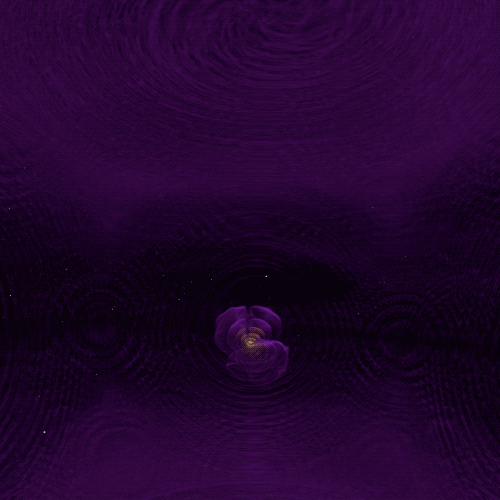A team of astronomers have compiled 12.5 years of data from the Fermi Gammy-ray Space Telescope to form a gamma-ray pulsar timing array, a system of cosmic lighthouses that could help reveal ripples in spacetime.
Since the first observation of gravitational waves in 2016, astronomers and astrophysicists have been trying to pin down the gravitational wave background, effectively the entire ocean of these waves in spacetime. Rapid rotations and collisions of the most massive objects in the universe, things like black holes and neutron stars, produce gravitational waves that can be detected on Earth.
The LIGO and Virgo interferometers have picked up gravitational waves from the mergers of black holes that are several times the size of our Sun, known as stellar-mass black holes. But scientists would also like to see much larger waves, like the ones that would ripple out from two supermassive black holes smashing into one another. That’s a challenge.
Gravitational waves from stellar-mass black hole mergers are “a few tens to hundreds of kilometers long, and hence we need detectors that are only a few kilometers long,” emailed Aditya Parthasarathy, an astronomer at the Max Planck Institute for Radio Astronomy in Bonn, Germany and co-author of the new paper. “To detect the trillion-kilometre long gravitational waves from supermassive black hole mergers, we need a detector that is across the galaxy!”
We can’t construct a galaxy-wide detector. But we can exploit naturally occurring pulsars, which is what the researchers behind the new work set out to do. They built on an existing idea called a pulsar timing array, which relies on radio waves that are emitted from the rapidly spinning remains of dead stars. These pulsars spin in a predictable way, which allows researchers to document subtle changes in the time it takes for the pulses to reach Earth. Those changes are due to distortions in spacetime — gravitational waves — that cause the pulse to arrive slightly earlier or later than usual.
Stringing together the pulsars’ signals into networks allows astronomers to form galactic-scale observatories. The recent team’s novel approach looks for the gamma radiation produced by some of these pulsars, which is detected by the Fermi Gamma-ray Space Telescope. Their research is published in the journal Science.

Last year, the North American Nanohertz Observatory for Gravitational Waves published a 12.5-year dataset describing a pattern in the light from 45 Milky Way pulsars, a low-frequency signal that was “what we expect the first hints of the gravitational wave background to look like,” according to the study’s lead author. That data came from two radio telescopes: the Green Bank Telescope in West Virginia and the Arecibo Telescope in Puerto Rico, which collapsed in 2020.
But timing the radio waves from pulsars isn’t a foolproof method for finding the gravitational wave background. Parthasarathy noted that, over the long distances it takes radio waves from pulsars to reach Earth, they encounter stray elections that can disrupt the waves’ journey. “Gamma-ray photons, however, are oblivious to the stray electrons, and hence gamma-ray observations are free from this major source of noise,” Parthasarathy said. “Thus, the gamma-ray pulsar timing array is a more direct probe for studying the gravitational wave background signal.”
All directness aside, timing the pulsars using their gamma radiation would give astronomers a probe of the gravitational wave background independent from radio sources — offering a more complete picture of what’s actually going on.
The gravitational wave background is in some ways similar to the cosmic microwave background, the earliest light we can see in the universe that is present anywhere you look in the sky. But “in some ways, it’s more dynamic than the [cosmic microwave background], because it tracks the past few billion years of the evolution of the universe, and the loudest (closest) sources may only have been strong [gravitational wave] sources for hundreds of thousands of years, which is basically nothing on these scales,” said Matthew Kerr, an astronomer at the U.S. Naval Research Laboratory and co-author of the paper, in an email to Gizmodo.
Kerr added that the waves are “a great probe of the dynamics of the inner parts of galaxies, and the merger history. But they don’t get started until supermassive black holes exist, which takes a long time, since galaxies have to condense, form stars, and grow.”
The Fermi approach is not yet as sensitive as that of radio telescopes — the recent results are about 30% as good as the radio pulsar timing arrays — but the astronomers believe that, in about five years, Fermi will be just as good at detecting the gravitational wave background.
More: ‘Huh, That’s Funny’: Physicists Delighted by New Measurement for the W Boson
